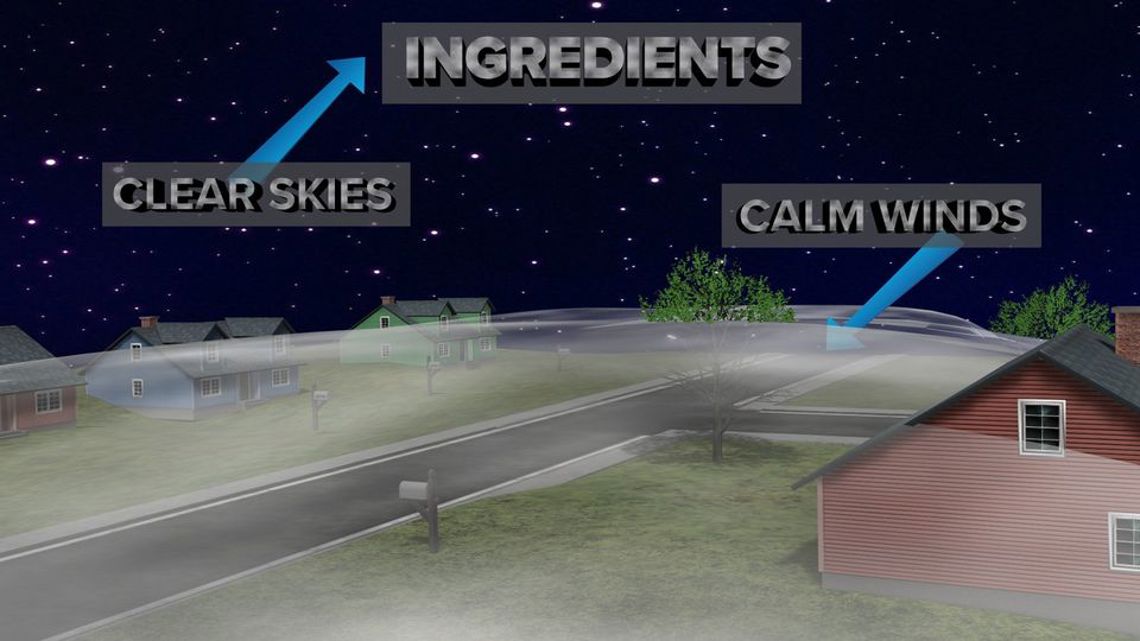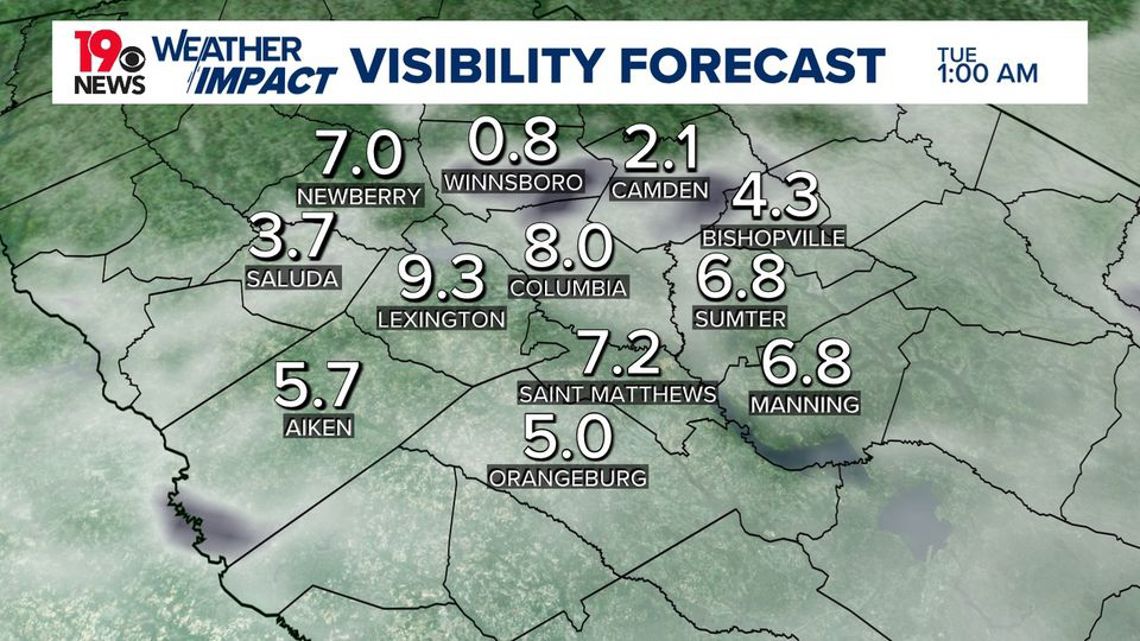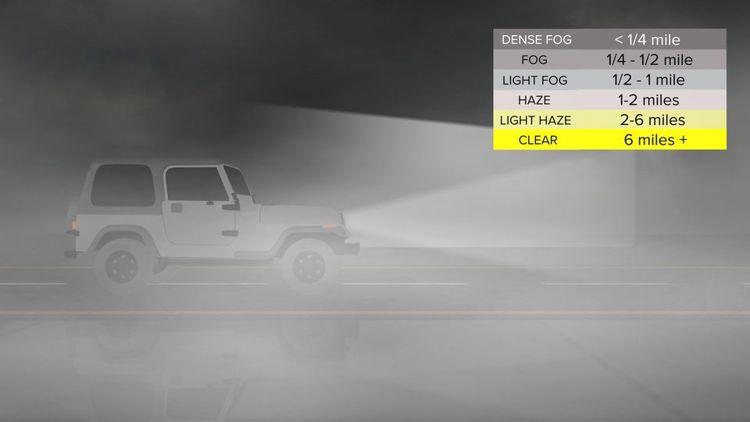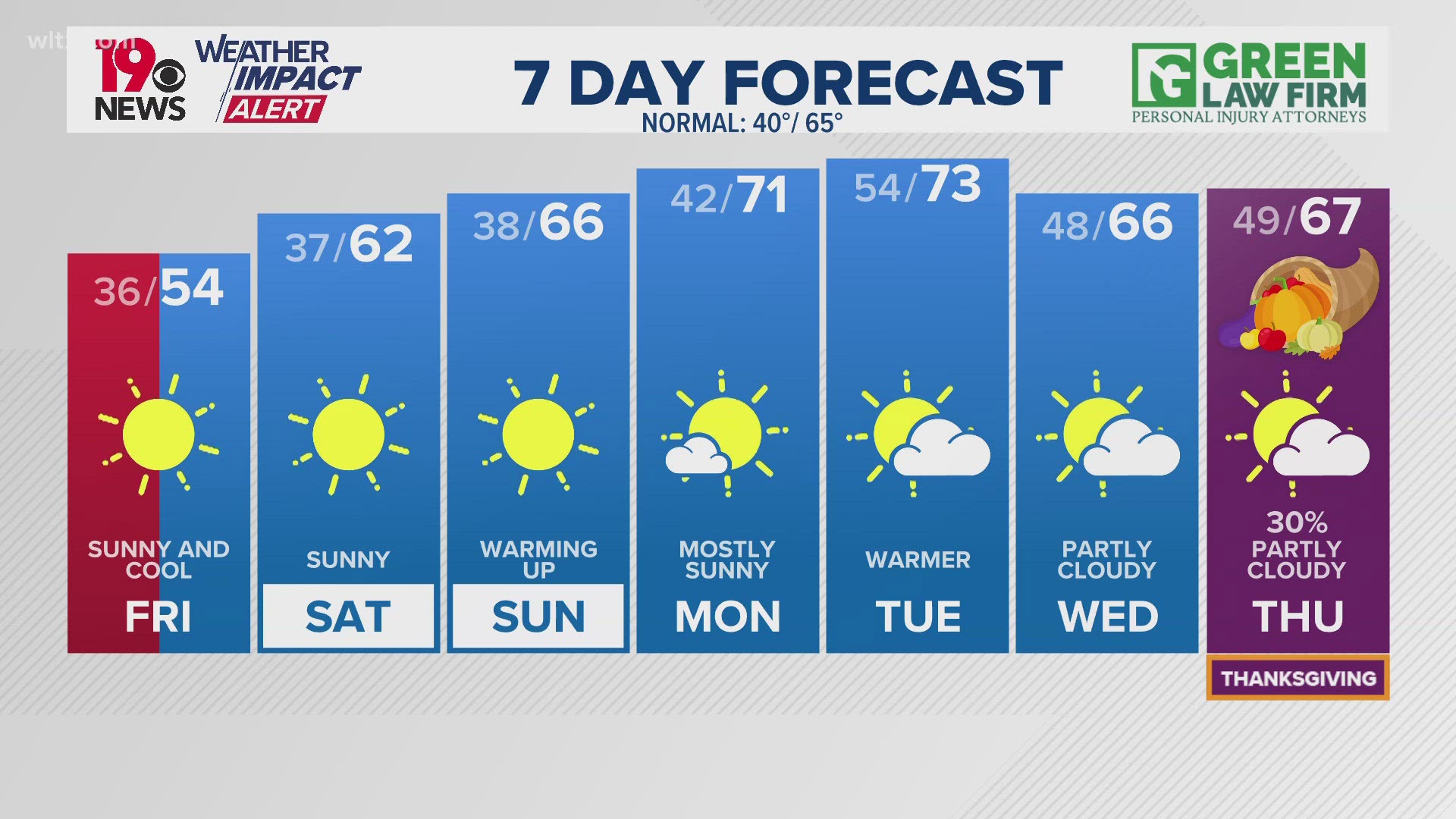COLUMBIA, S.C. —
Visibility plays a huge role in how we experience the weather, and it’s an important factor in staying safe on the road, in the air, and even on foot. When meteorologists talk about visibility, we’re describing how clearly you can see objects at a distance. Clear visibility lets you see far into the distance with ease, but low visibility can make it hard to see even nearby landmarks, which can impact driving conditions, outdoor plans, and more.


Low visibility often comes with specific weather conditions, like fog, heavy rain, or snow. Fog, for example, forms when air becomes saturated with moisture and water droplets hang in the air, creating a misty screen that reduces how far we can see. On a foggy morning, visibility might drop to less than a quarter of a mile, making it hard to see other cars, street signs, and even traffic lights until you're much closer to them. This is why driving in fog requires extra caution and lower speeds.
Rain and snow can also affect visibility by making the air hazy and adding glare, especially at night or when headlights and streetlights reflect off wet surfaces. Light rain might reduce visibility only slightly, but heavy rain can make it tough to see more than a few hundred feet ahead. Snow can be even trickier; during a snowstorm, visibility may change quickly as snow falls at different rates, and blowing snow can lead to “whiteout” conditions, where everything seems blanketed in white and even close objects are hidden from view.
Beyond the weather itself, visibility can also drop when other particles like dust or smoke fill the air. Dust storms in dry regions and wildfire smoke, for example, can create a thick haze that hangs over a city, making the sky appear murky and dim. Wildfire smoke, in particular, can drift for hundreds of miles, affecting visibility even far from the fire source. These conditions not only obscure the view but can also impact air quality, making it uncomfortable or even unsafe to be outside for long.
When visibility is low, especially if it’s below a mile, it’s best to avoid unnecessary travel if possible. And when you do need to be out, taking it slow, using headlights, and staying alert to surroundings can make all the difference.





